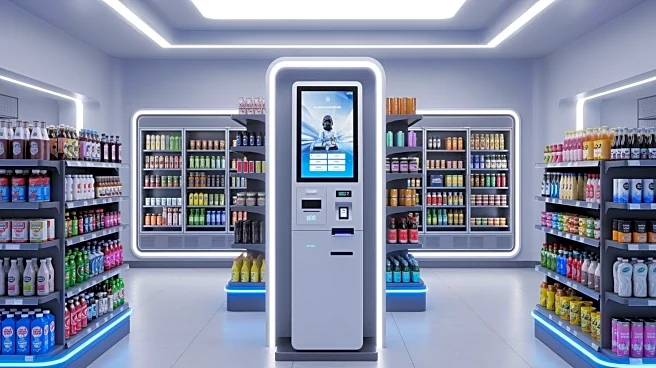What's Happening?
Convenience-store retailers are exploring the use of stablecoins as a potential solution to reduce credit card swipe fees, which can range from 2% to 3% per transaction. At the 2025 NACS Show in Chicago,
Doug Kantor, general counsel of NACS, highlighted the importance of finding faster and cheaper payment options to drive customer loyalty. Stablecoins, a form of digital currency designed to maintain a stable value, offer quicker and cheaper transactions compared to traditional credit cards. Michael Curry from Spendcodes emphasized the growing accessibility of stablecoins, particularly with the widespread use of mobile devices. As digital payments evolve, stablecoins could be integrated into convenience stores' branded digital wallets, allowing them to coexist with traditional payment methods like credit cards and loyalty programs.
Why It's Important?
The adoption of stablecoins by convenience stores could significantly impact the retail industry by reducing transaction costs and enhancing payment flexibility. With credit and debit card interchange fees reaching over $187 billion last year, stablecoins present a cost-effective alternative that could save retailers substantial amounts in processing fees. This shift could also encourage more customer visits and boost sales, as retailers integrate stablecoins with loyalty programs. The move towards software-based POS systems and digital wallets reflects a broader trend in the retail sector towards embracing digital payment solutions, potentially setting a precedent for other industries to follow.
What's Next?
Retailers are encouraged to experiment with stablecoin transactions personally to understand their functionality before investing in additional services. As convenience stores transition to software-based POS systems, stablecoin payments via smartphones could become more prevalent. New tools are expected to emerge, simplifying the use of stablecoins for everyday sales. The integration of stablecoins into digital wallets alongside traditional payment methods and loyalty programs could create a powerful trifecta, enhancing customer engagement and reducing costs.
Beyond the Headlines
The adoption of stablecoins in the retail sector raises questions about the regulatory environment and the need for clear guidelines to ensure consumer protection and financial stability. As stablecoins become more mainstream, their impact on traditional banking systems and the broader financial ecosystem will need to be closely monitored. Additionally, the cultural shift towards digital currencies may influence consumer behavior and expectations, prompting businesses to adapt to new payment preferences.











